Dyson V15 Detect vs Gen5detect: which is the better vacuum?
I tested two of Dyson's top cordless vacuums side by side – here's what I learned
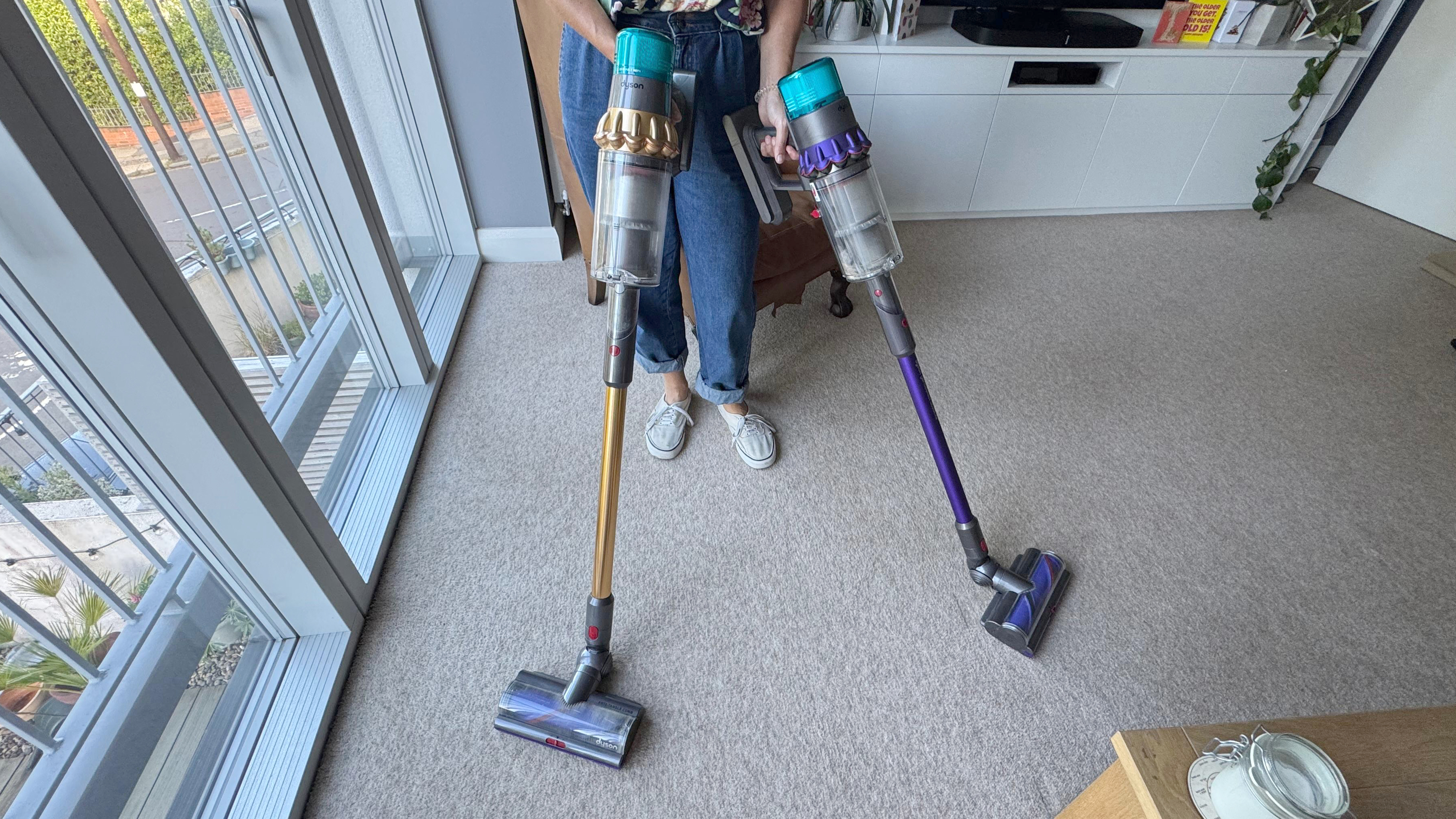
If you're in the market for a top-of-the-range vacuum cleaner, you might well find yourself trying to decide between the Dyson V15 vs Gen5detect. The are two of the best Dyson vacuums you can buy. Both are tech-packed high-performers; this guide is here to help you figure out which one will suit you.
The Dyson V15 – officially, the V15 Detect – is the older of the two, released in 2021. It was the first of Dyson's vacuums to be able to sense the number and size of particles being sucked up and provide that information in real time via a screen on the main vacuum body. It was also the first to add a dirt-illuminating laser to its fluffy floorhead. One or both of these features are perhaps the reason behind the 'Detect' part of the name.
Head to TechRadar's full Dyson V15 Detect review for a full, in-depth look, or see how it compares to its predecessor in my Dyson V15 vs V11 face-off.
The Dyson Gen5detect also has 'detect' in its name, and includes both of those features from the V15, but with some tweaks and improvements. This model launched in 2022 in Australia, and in 2023 in the US and UK. It has a new motor compared to the V15 – the reason for the 'Gen5' of the name – and was the first flagship Dyson to replace the trigger with a one-press button.
TechRadar's Dyson Gen5detect review has all the details, or you can read about its successor (released in 2025) in my Dyson V16 Piston Animal review.
If money is no object, then the better vacuum is the Gen5detect. It has had some small but welcome usability improvements over its predecessor, the redesigned motor means slightly better suction, and it offers longer runtimes too.
However, the payoff for some of those changes is that it's heavier (and the V15 isn't especially light in the first place). It's also significantly more expensive, and the difference in performance and usability is really only marginal, so for many people it won't be worth the extra outlay.
Sign up for breaking news, reviews, opinion, top tech deals, and more.
That's the short version. To help you figure out which is the best cordless vacuum for you, read on for a more in-depth breakdown of how these models compare...


Specs: How do the Dyson V15 and Gen5detect specs compare?
| Header Cell - Column 0 | V15 Detect | Gen5detect |
|---|---|---|
Weight: | 6.83lbs / 2.96kg | 7.72lbs / 3.5kg |
Dimensions (H x L x W): | 49.6 x 10.5 x 9.8in / 126 x 26.6 x 25cm | 50.2 x 10.87 x 9.8in / 127.6 x 27.6 x 25cm |
Operation: | Trigger | One-press button |
Filter: | Whole-machine filtration | Whole-machine HEPA filtration |
Bin capacity: | 0.2 gallon / 0.77L | 0.2 gallon / 0.77L |
Max suction: | 240AW | 280AW |
Cyclones: | 14 | 14 |
Max runtime (Eco mode): | 1hr | 1hr 10 |
Runtime in Boost mode: | 18 mins | 15 mins |
Charge time: | 4hrs 30 | 4hrs 30 |
Price: Dyson V15 vs Gen5detect price and value compared
- At list price, V15 Detect costs from $849.99 / £649.99 / AU$1,449
- At list price, Gen5detect costs from: $1,049.99 / £769.99 / AU$1,549
- Various alternative versions, including Absolute and Outsize models
Based on what's available at list price when buying direct from Dyson, the V15 Detect currently costs from $849.99 / £649.99 / AU$1,449. Prices for the Gen5detect start at $1,049.99 / £769.99 / AU$1,549.
In both cases there are a few versions (Absolute, Extra, and so on), with different tools or in different colorways, so it's worth checking what's in the box and making sure you're getting the best-value bundle for your needs.
There are a couple of notable alternatives worth drawing particular attention to. The Gen5detect is available as a Gen5outsize – this is designed for big houses, and comes with a larger bin, more cyclones and wider floorhead. The V15 Detect can be purchased as the V15s Detect Submarine, with a mopping floorhead that can be swapped on.
Whichever version you go for, both the V15 and Gen5detect are firmly in the premium price bracket for vacuum cleaners. To their credit, they also look and feel high-end, and boast features you won't find anywhere else on the market. As neither is the newest model out any more, you might also be able to snag a discount. Dyson promo codes are rare, but often see Dyson deals around events like Black Friday.
Design: Comparing the Gen5detect and V15 designs
- V15 is operated by trigger, while Gen5detect uses a one-press button
- Gen5detect is heavier, with a better motor, battery and filter
- Gen5detect has an integrated crevice/dusting tool within the wand
There are slight differences in proportions, but in terms of the main components, the Dyson V15 and Gen5detect look pretty much the same. You've got the dust bin, cyclone array, motor and wand all in a straight line, to maximize suction efficiency.
Both have the same three power modes: Eco (a lower-power mode), Auto (which adjust based on floor type and dirt levels) and Boost (a powerful mode for ground-in dirt). The dust bin is the same size on both, too.
Thanks to a different battery and motor, the Gen5detect is heaver, although there's not loads in it. Weighed on its own, with no wand or cleaning tool attached, the Gen5detect is 4.75 lbs / 2.16kg, and the V15 is 4.57 lbs / 2.07kg.
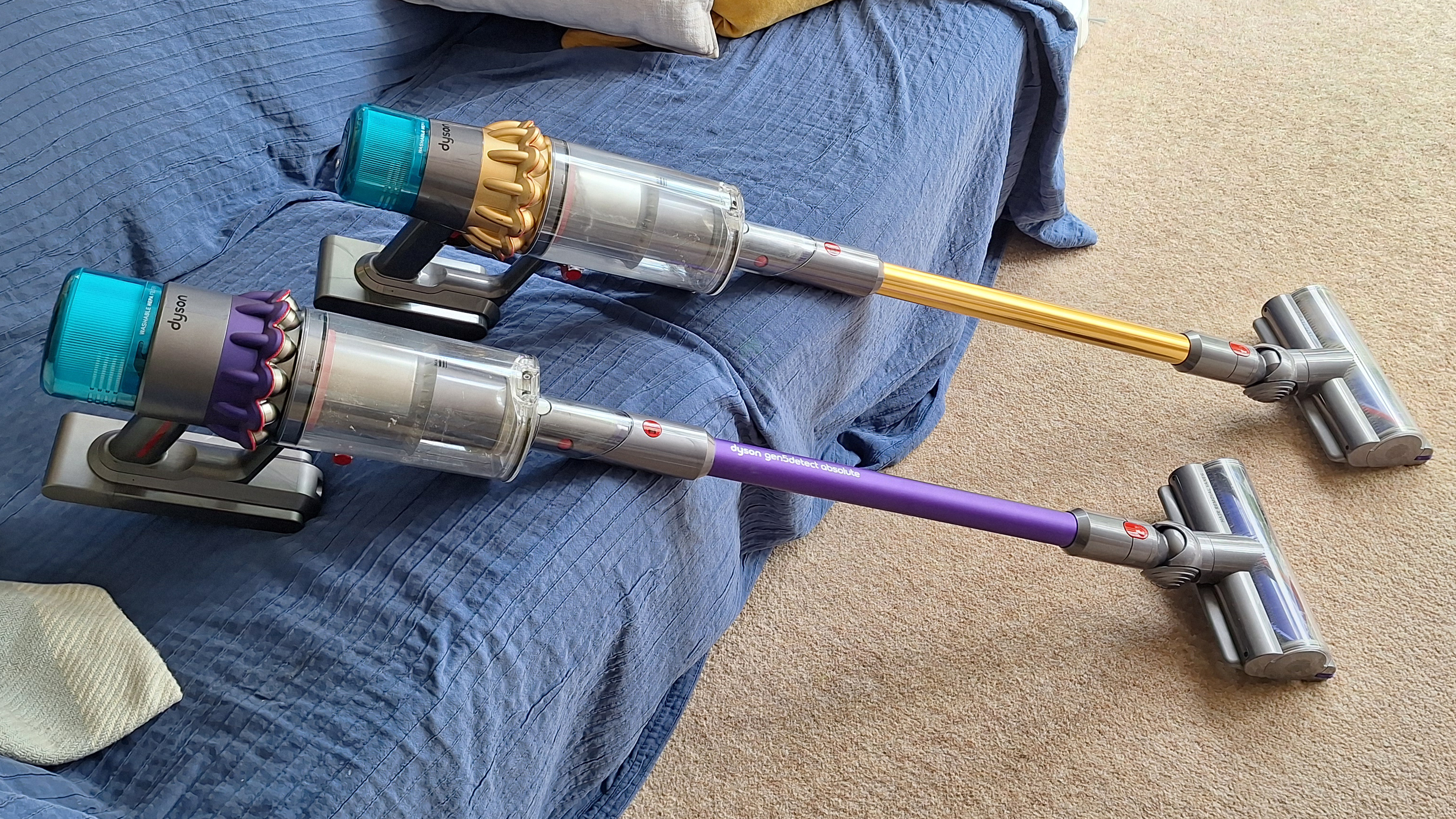
On significant design difference is that the V15 is operated by a trigger, which needs to be depressed as you vacuum. On the Gen5detect, that's replaced by a one-touch button.
Both vacuums use an LCD screen to provide any necessary info. This includes remaining battery life, blockage info, and if the filter needs cleaning. It will also provide a real-time summary of the particles being sucked up.
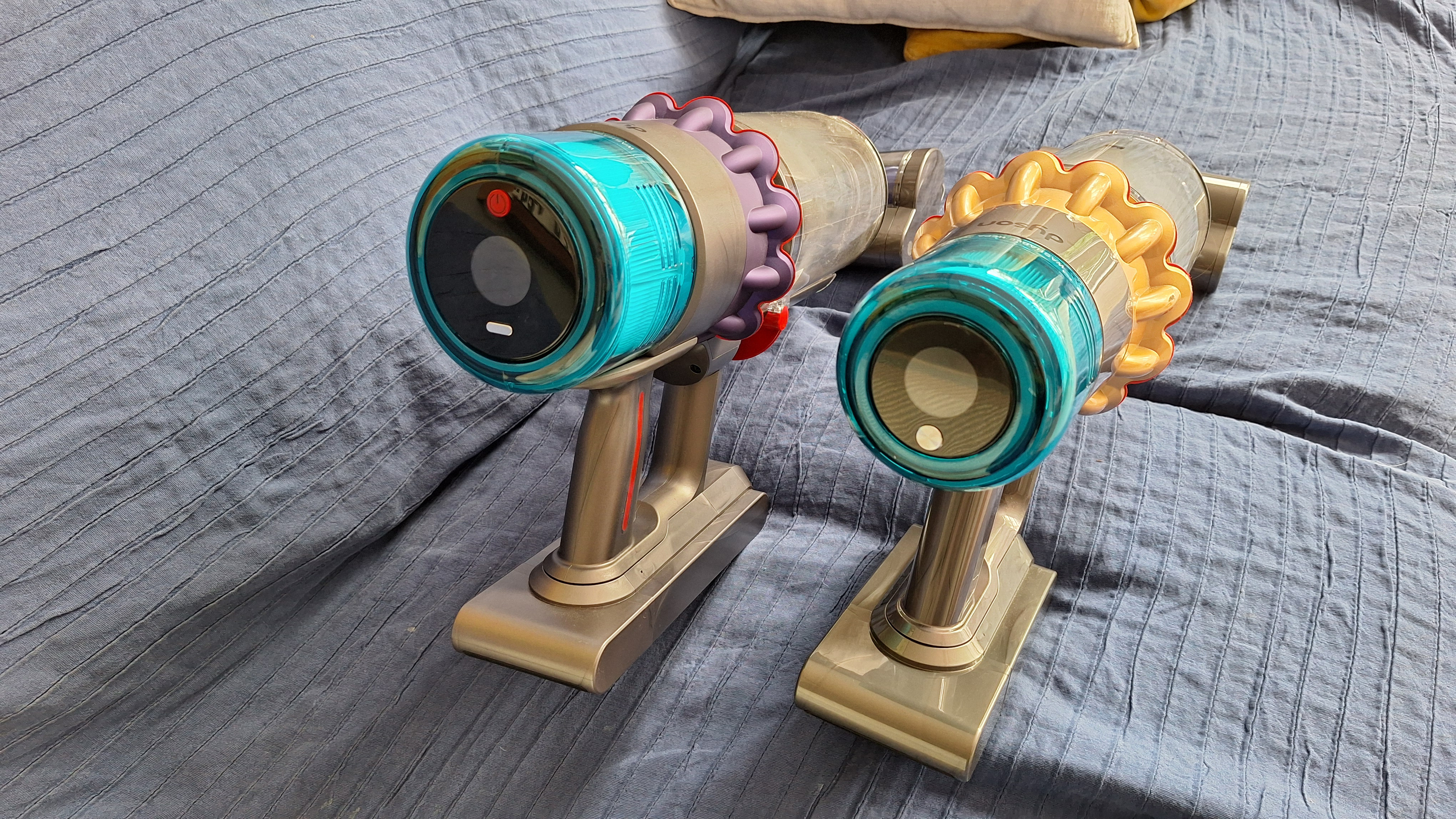
The filter has been improved on the Gen5detect – it's a HEPA filter, and washable, so there are no ongoing costs. Dyson claims this filter can capture particles as small as 0.1 microns, compared 0.3 microns with the V15 Detect.
In reality, both have excellent filtration. The V15's filter will be effective enough for most people, although those who struggle with allergies may wish to opt for the Gen5detect.
Both come with two floorheads as standard, and both work with the vacuum's Auto adjustment mode. First is the Digital Motorhead, which is your main floorhead, suitable for use on hard floor or carpet.
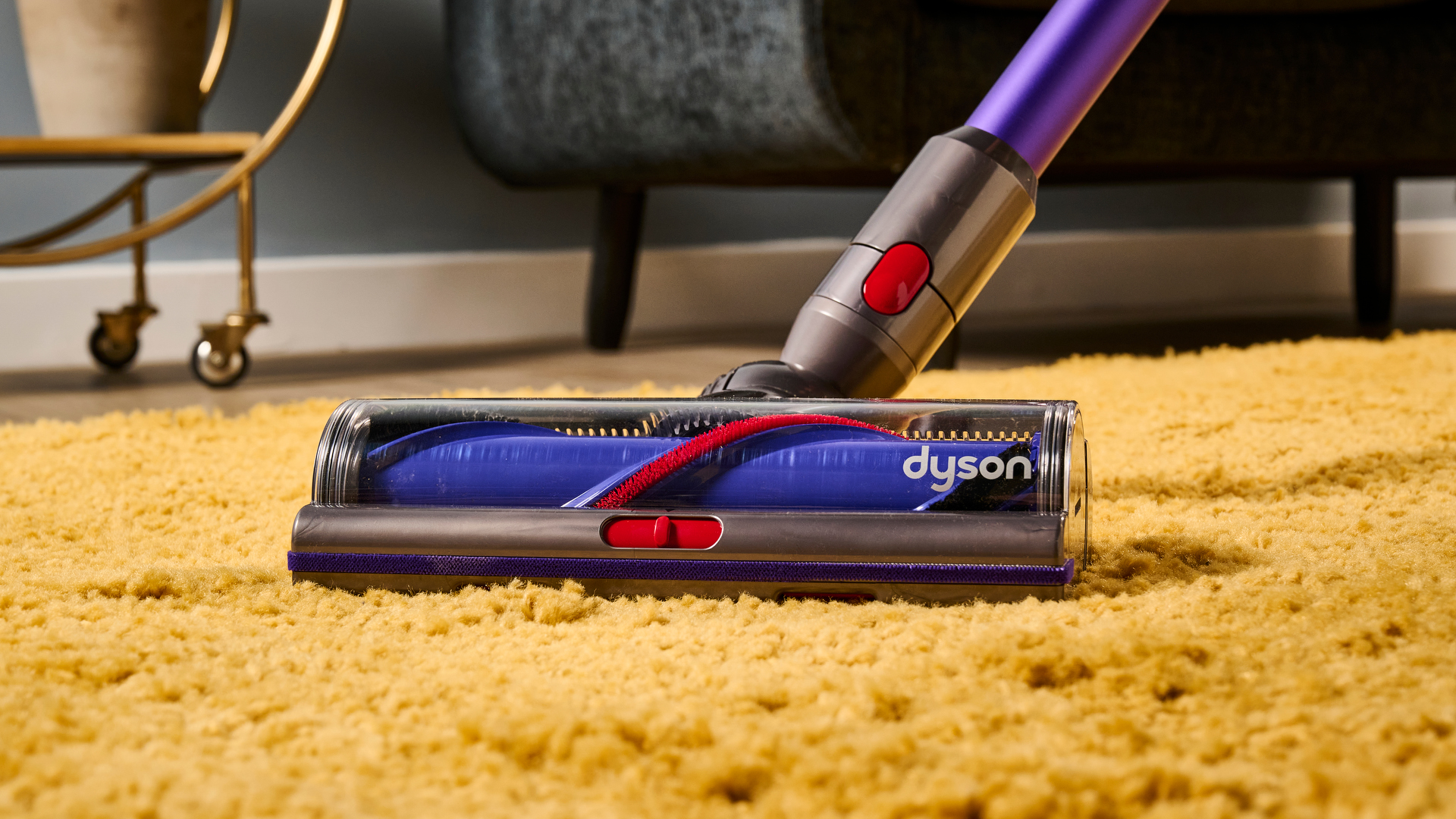
Second is the Fluffy Optic floorhead, for hard floors. The V15 Detect was the first to introduce the laser to this attachment, and it has had a slight redesign on the Gen5detect. The newer vacuum's Fluffy floorhead has a slightly brighter and broader beam of light. The fluffy part is washable on both versions.
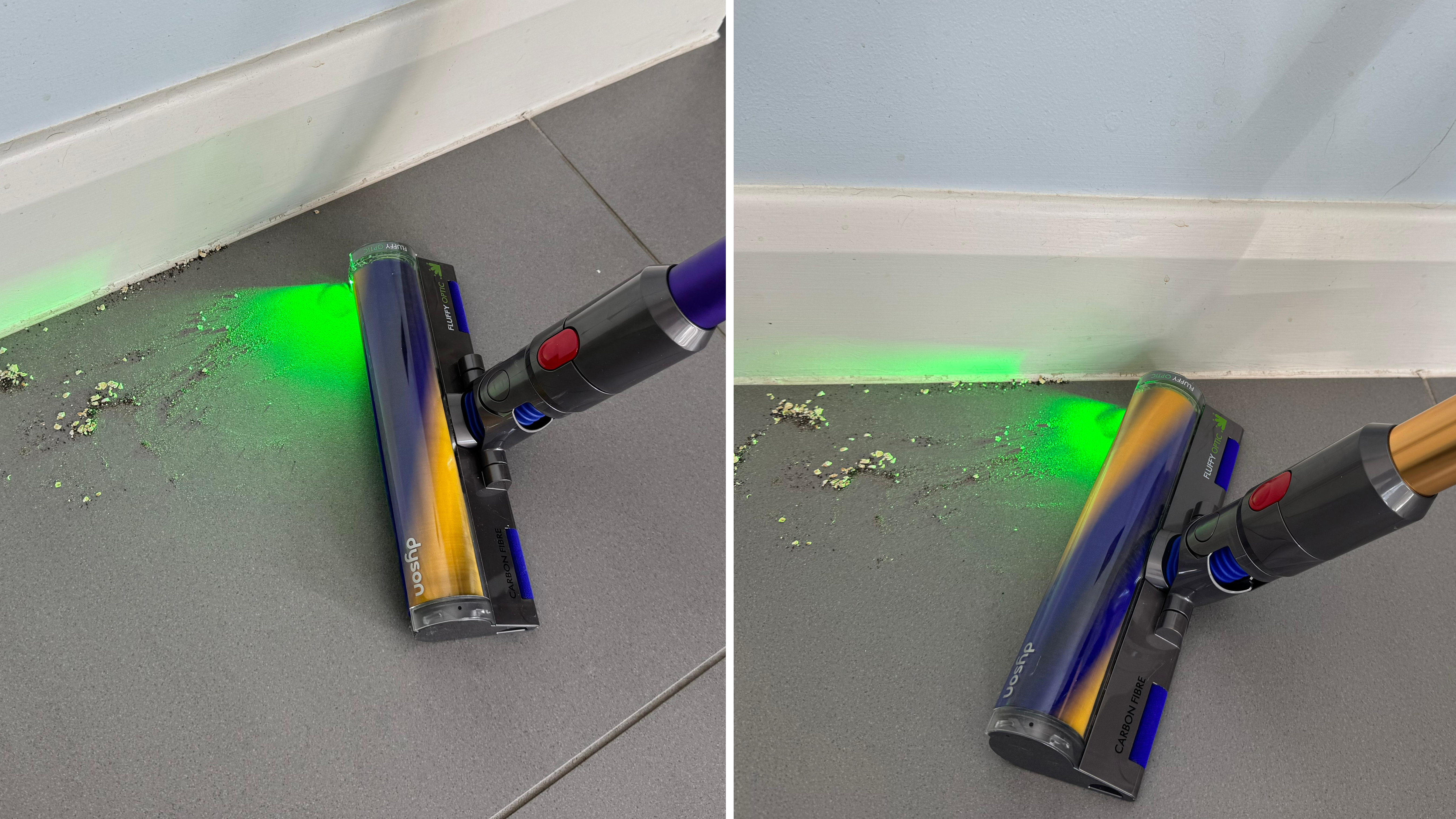
With both vacuums, you can remove the wand and attach a tool directly to the motor unit for use as a handheld. However, with the Gen5detect, there's an integrated crevice/dusting tool hidden within the wand, for you can convert it really easily.
The tool selection is largely the same between the two vacuums, but which ones get included will depend on where you live and what configuration of vacuum you go for.
Performance: Which vacuum performs better, the Gen5detect or V15?
- Gen5detect officially has more power, but both are excellent suckers
- Both can auto-adjust based on dirt levels
- Extra weight makes Gen5detect unwieldy, especially in handheld mode
Officially, the Gen5detect is the more powerful of the two vacuums, with a maximum suction of 280AW compared to the V15's 240AW. However, they're both excellent suckers. Both aced TechRadar's suction tests, offering impressive cleaning on even the lowest Eco level.
In the video clip below, you can see how the two vacuums handle fine particles (tea) and chunky spillages (oats) in Auto mode – where the vacuum adjusts suction based on dirt levels and floor type.
The V15 Detect is on the far left on screen, with the bright gold wand. The Gen5detect is in the middle, with the purple wand. As you can see, the performance is very strong from both vacuums, with no visible tea left on the carpet, and no oats pinged around rather than sucked up.
(I've cropped to the relevant part of the video here, but you can head to this suction comparison to see the full thing, which includes how the V16 performance matches up – spoiler, not well.)
You can see how both tackle the same tea spillage in the clip below. In this test, both pass with flying colors, clearing all visible tea in a single forwards and backwards pass. However, my Australian teammate, Sharmista Sarkar, has also tested both models and commented that she found the Gen5detect was noticeably more powerful in Boost mode, compared to the V15.
In everyday use, either would be more than sufficient for most people's needs, and make an excellent choice of cleaner. However – and I'm really splitting hairs here – the Gen5detect might be a better choice if you're dealing with lots of ground-in dirt.

Moving on to general comfort and usability. The way the real-time dirt reports are displayed on the screen is different on each vacuum, but essentially they're showing the same thing. I'm not sure this feature is strictly necessary on either model, but it can be a useful indicator of when you're done cleaning, and make you aware of dirt hotspots you might not previously have known about.
The extra weight on the Gen5detect is noticeable, and makes it particularly unwieldy to use as a handheld. It's not just the weight, but the weight distribution, that's the issue – it feels awkward and top-heavy. In fact, I had a similar complaint with the V15, but it's exacerbated on the heavier Gen5detect.
One notable difference when it comes to usability is that each vacuum has a different method of operation. The V15 operates using a trigger, which is great for quick cleanups but awkward for longer cleaning sessions, because there's no 'lock' for continual running. In contrast, the Gen5detect uses a one-press button, which is ideal for longer cleaning sessions, but annoying for quick cleanups, because you need both hands free to switch the vacuum on and off.

If you're going to be swapping between handheld and floor modes a lot then it might be worth opting for the Gen5detect, as the integrated crevice and duster tool really does make this process super straightforward. However, it's still pretty simple on the V15.
Battery: Gen5detect vs V15 battery life comparison
- In Eco mode, Gen5detect lasts 70 mins; V15 lasts 60 mins
- In Boost, Gen5detect lasts 15 minutes; V15 lasts 18 mins
- Both have removable, swappable batteries
The battery has been upgraded for the Gen5detect, meaning a boost in runtimes. This newer model can manage a maximum of 70 minutes in Eco mode (and actually, ran to 75 minutes in our tests), compared to 60 minutes on the V15.
On test, my main reviewer got about 18 minutes of power from the V15 on Boost mode, and 15 minutes from the Gen5detect on a hard floor, although just eight minutes on carpet. Note that the Boost mode is more powerful on the newer model, which means it should be more efficient at cleaning.
Times in Auto mode will vary, based on how dirty your floors are and whether you're cleaning mostly hard floors or carpet.
Recharge times also vary. Dyson quotes 4 hours 30 mins for both machines, but my tester found the V15 could take up to 5 hours, whereas charging the Gen5detect from flat took just three hours.
Both have the option to remove the battery, and you can buy extra batteries and hot-swap them to extend cleaning times. Both vacuums display a countdown timer on the screen, which shows how long you have left based on the mode you're currently using.
Verdict: Should you buy the Dyson Gen5detect or the V15?
Buy the Dyson V15 Detect if...
You want something lighter
Both are quite top-heavy machines, but the V15 is the lighter of the two – if you're going to be using your vacuum regularly as a handheld, in particular, it's probably worth opting for the V15.
You're on a tighter budget
Neither are cheap, but the Gen5detect is generally significantly more expensive than the V15. It has a lot of the same features, and in terms of cleaning, the V15 has enough suction to more than meet most people's needs – so you'll need to figure out if the newer model is worth the extra outlay.
Buy the Gen5detect if...
You have allergies
The Gen5detect has a HEPA filter that's even more effective than the full-machine filtration found in the V15. It's capable of capturing particles as small as 0.1 microns, compared 0.3 microns with the V15 Detect, which might make it a better fit for those who struggle with allergies.
You have a lot of hard floors
The improved Laser Fluffy tool with the Gen5detect has a brighter, wider beam that makes it slightly better at highlighting dirt and debris on hard floors.
You need to be able to tackle ground-in dirt
Both have similar cleaning power in Auto mode, but the Gen5detect has a more oomph in Boost mode.

Ruth is TechRadar's Homes Editor specializing in air (vacuum cleaners, fans, air purifiers), and hair (hair dryers, straighteners and stylers). She has been in consumer journalism since 2020, reviewing and writing about everything from outdoor kit to mattresses and wellness gadgets, with stints on Tom's Guide and T3.
You must confirm your public display name before commenting
Please logout and then login again, you will then be prompted to enter your display name.